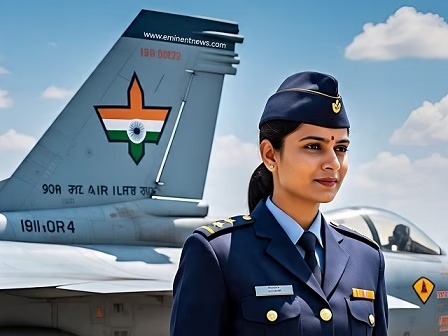Laser Directed Energy Weapon (DEW) systems use high-energy laser beams to damage or destroy targets . These systems offer instantaneous engagement, precision targeting, and low per-shot cost, making them ideal for neutralizing threats like drones and incoming munitions .
Key Aspects of Laser DEW Systems:
- Technology: DEWs use high-energy laser beams to neutralize targets .
- Advantages:
- Instantaneous Engagement: Lasers can engage targets almost instantly .
- Precision Targeting: They offer highly accurate targeting capabilities .
- Low Per-Shot Cost: Compared to traditional kinetic weapons, the cost per shot is low .
- Countering Low-RCS Threats: Effective against low Radar Cross Section (RCS) threats like drones .
- Components: Advanced electro-optical tracking, beam-focusing systems, and automated kill assessment algorithms .
- Applications:
- Neutralizing aerial threats such as fixed-wing UAVs and swarm drones .
- Defending critical infrastructure .
- Countering saturation drone attacks and precision-guided munitions .
- Blinding electro-optical systems .
- Disabling surveillance sensors .
- Mobility: Can be mounted on 4×4 vehicles with a Command and Control (C2) unit and a Beam Control Unit for targeting and directing the laser beam .
- Global Context: Countries like the United States, Russia, China, and Israel also possess operational high-power laser weapon technology .
- India’s Developments:
- Sahastra Shakti: DRDO’s 30-kW laser DEW system, which has successfully tracked and neutralized aerial targets .
- Surya Project: DRDO is developing a 300-kW laser weapon system with a range of up to 20 kilometers to neutralize supersonic missiles, UAVs, and high-speed aircraft .
- DURGA: An earlier prototype named “DURGA” (Directionally Unrestricted Ray-Gun Array) represented a concept stage with limited combat utility .
India’s Sahastra Shakti Laser Weapon System:
- Name Significance: “Sahastra” means “a thousand,” and “Shakti” refers to divine power or feminine energy .
- Capabilities Demonstrated:
- Neutralizing fixed-wing unmanned aerial vehicles (UAVs) .
- Neutralizing swarm drones .
- Radiating panel of an antenna .
- Blinding an EO System .
- Mobility and Deployment: Mounted on two 4×4 vehicles, with one carrying the Command and Control (C2) unit and the other housing the Beam Control Unit .
- Future Configurations: Envisions one C2 unit with multiple Beam Control Units to engage larger drone swarms .
- Technological Advancement: The system incorporates electro-optical tracking, beam-focusing systems, and automated kill assessment algorithms .
- Tactical Advantage: Provides a tactical edge in asymmetric warfare and future combat scenarios involving saturation drone attacks .
- Operational Readiness: The 30-kilowatt laser-based weapon system is ready for production and deployment across various military platforms .
- Laser Directed Energy Weapon (DEW) systems boom for country…
























